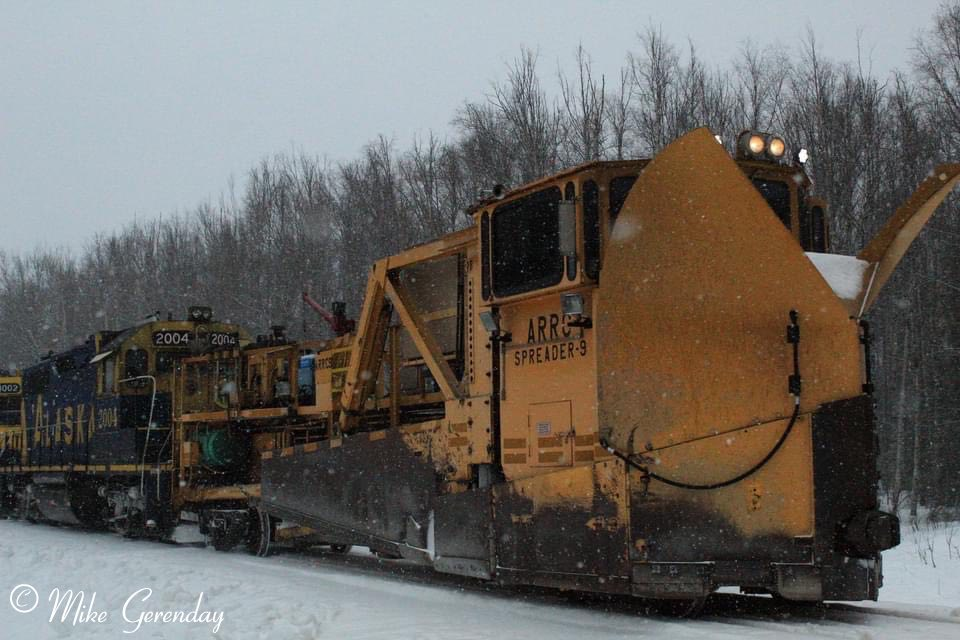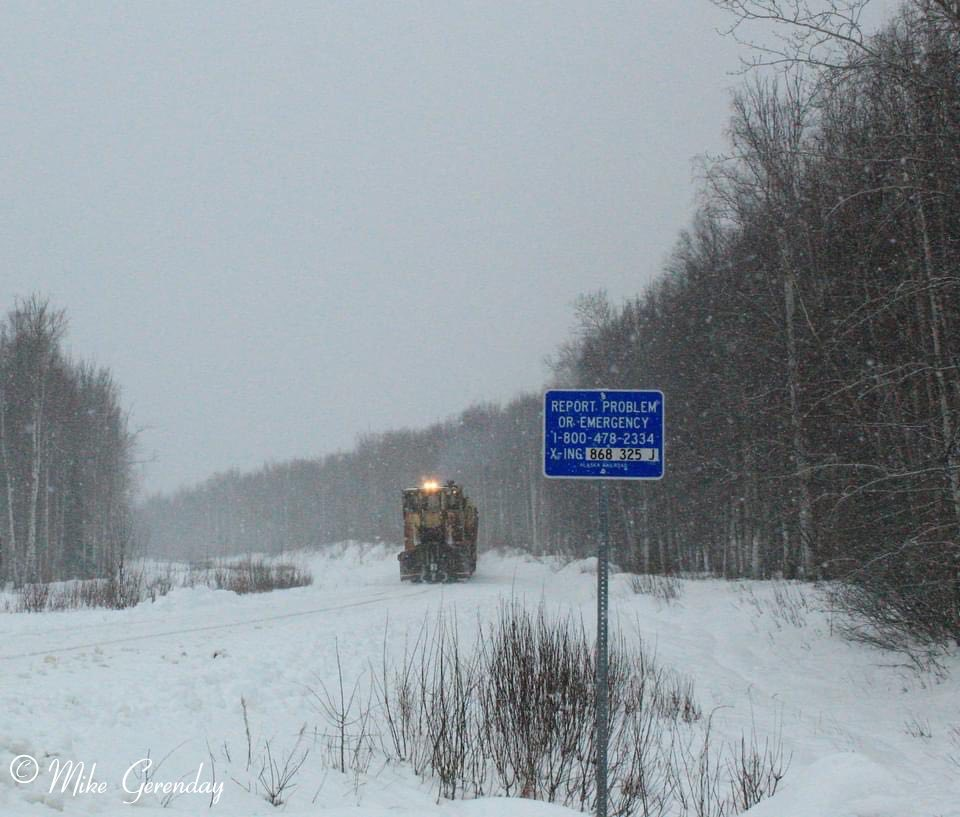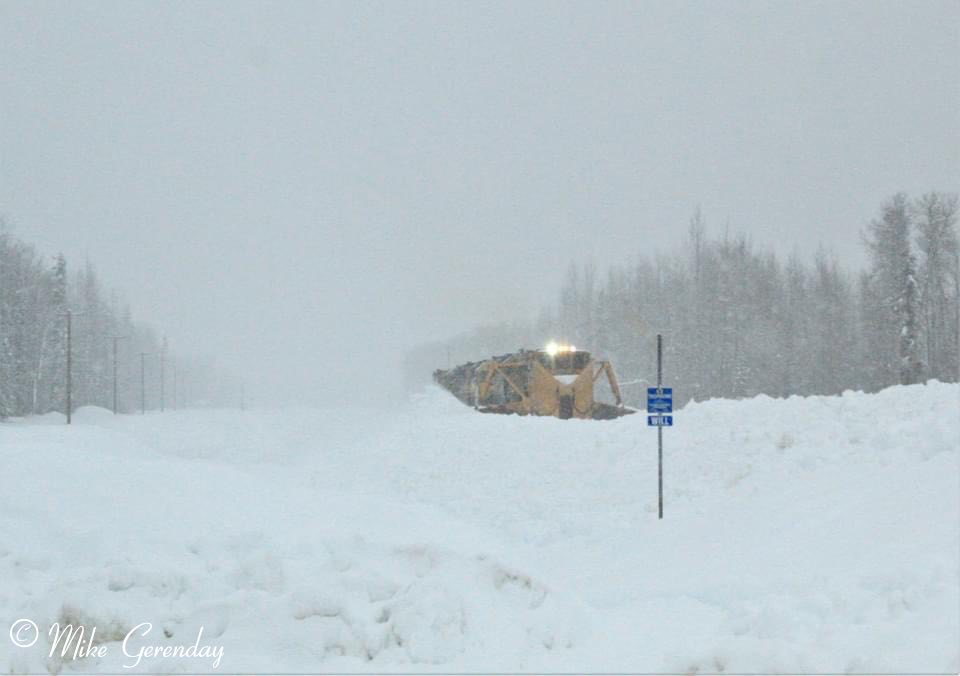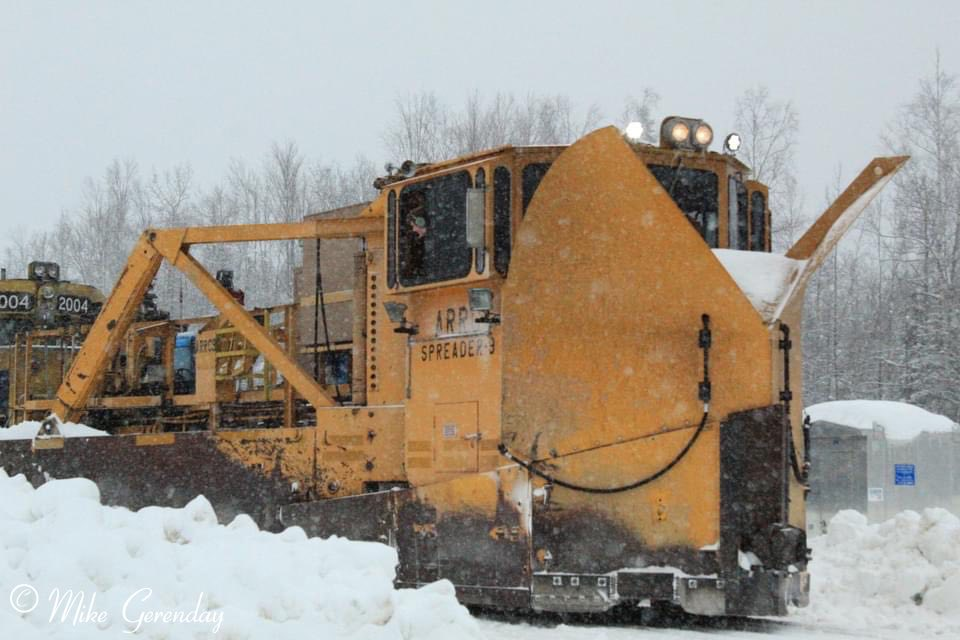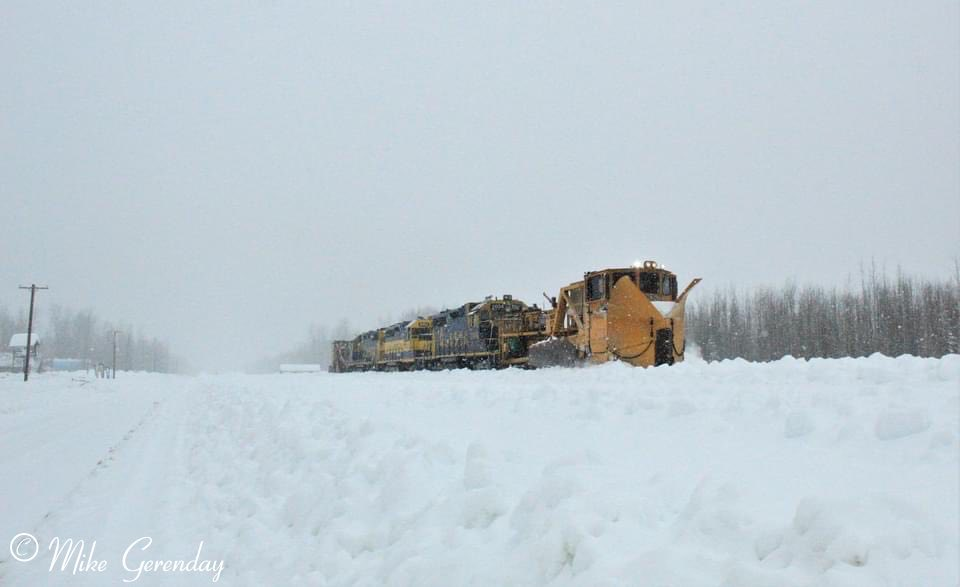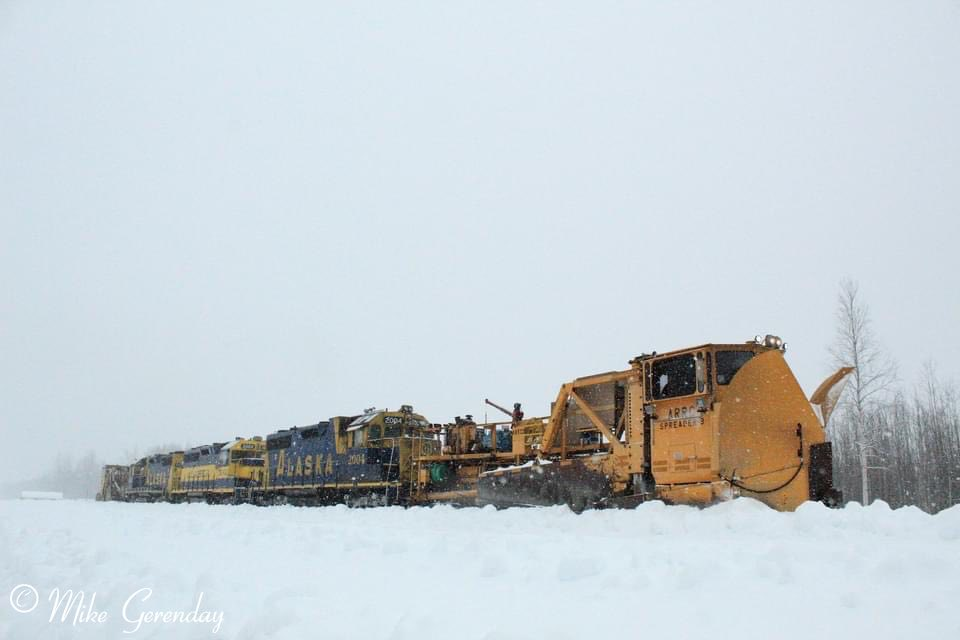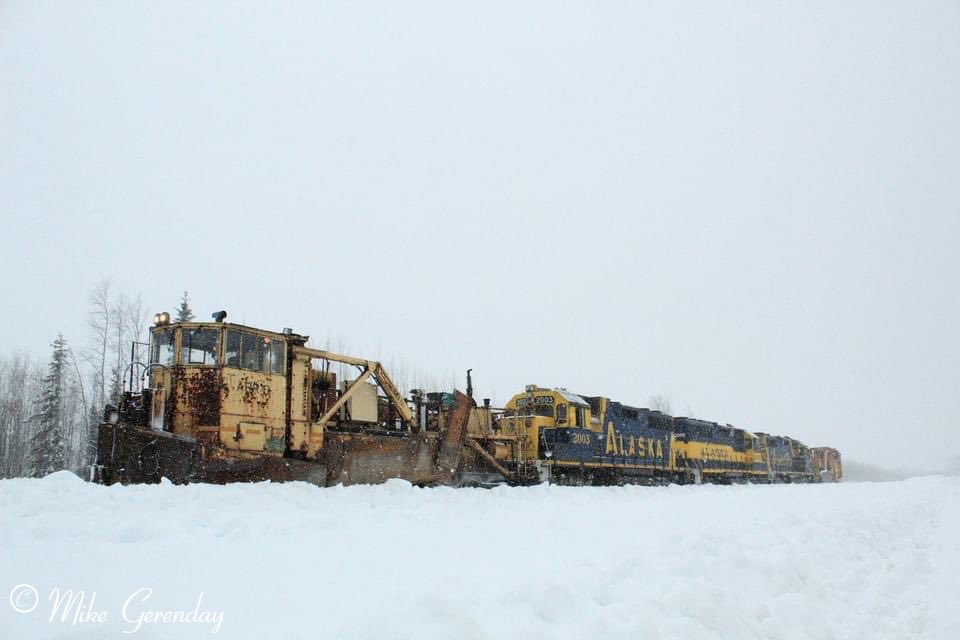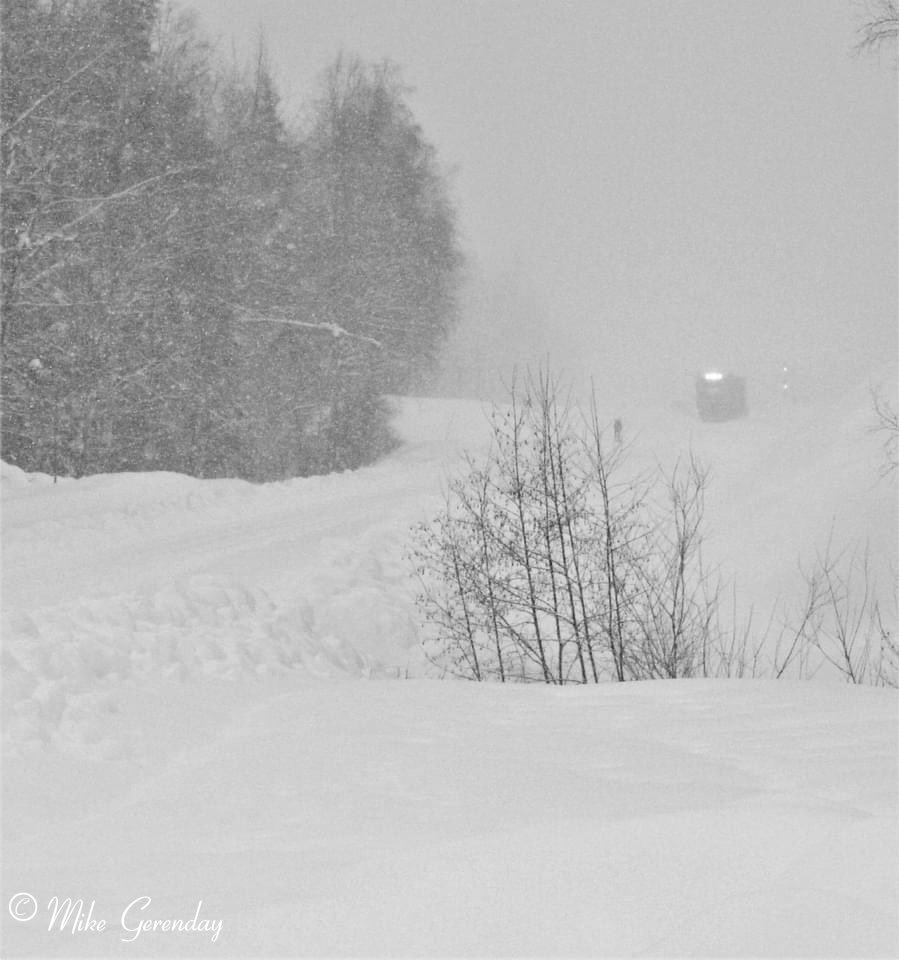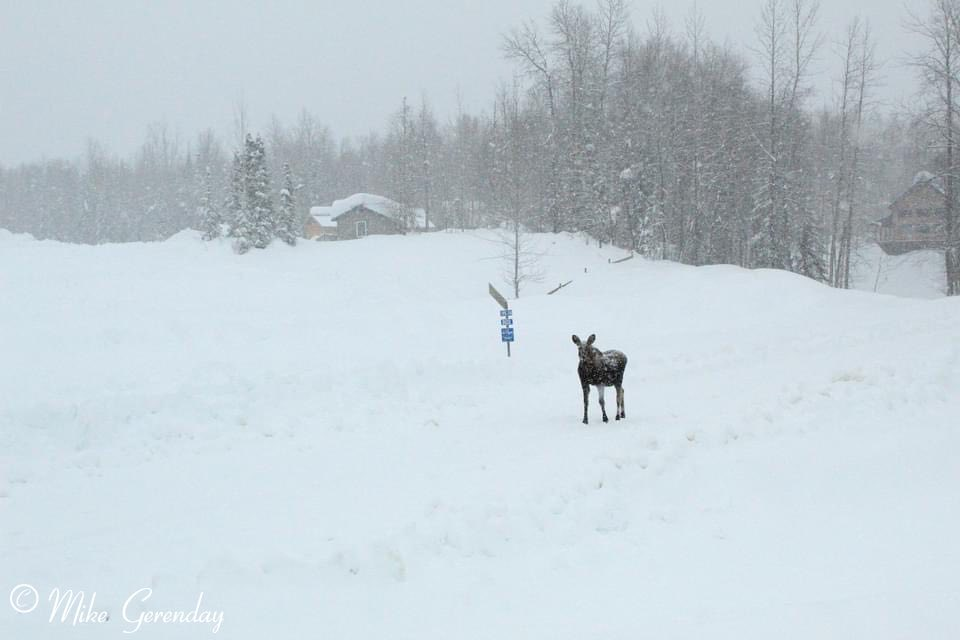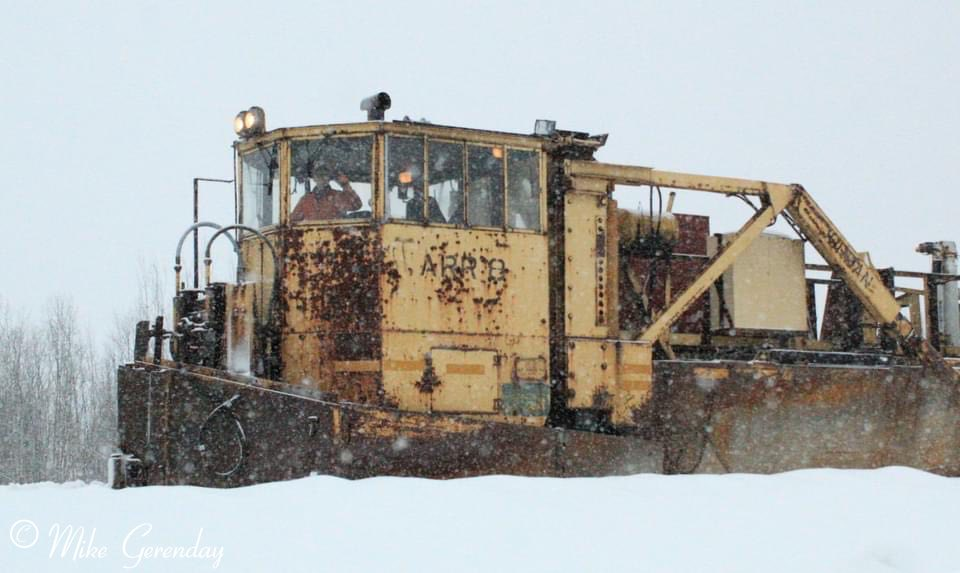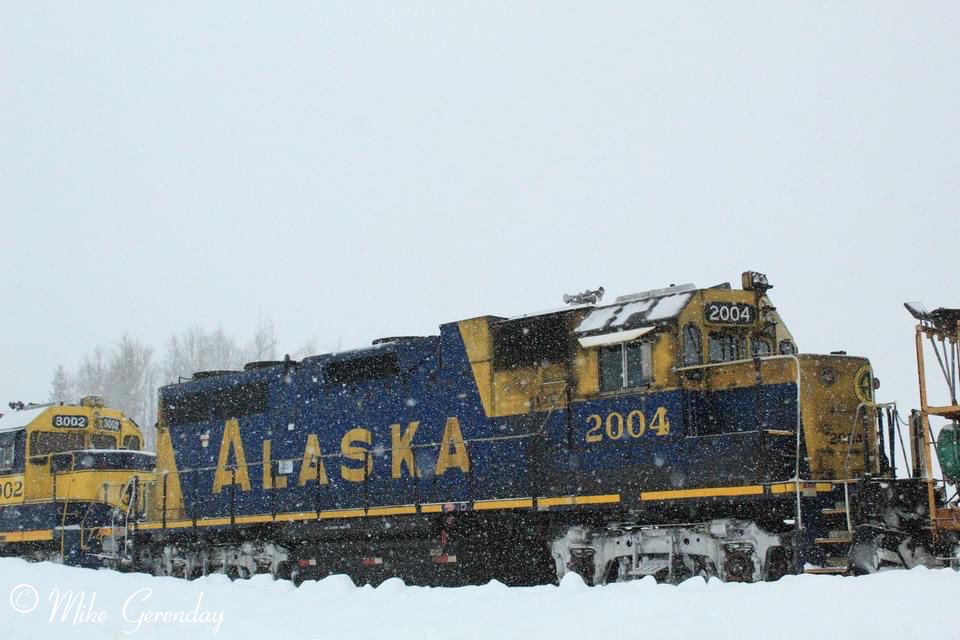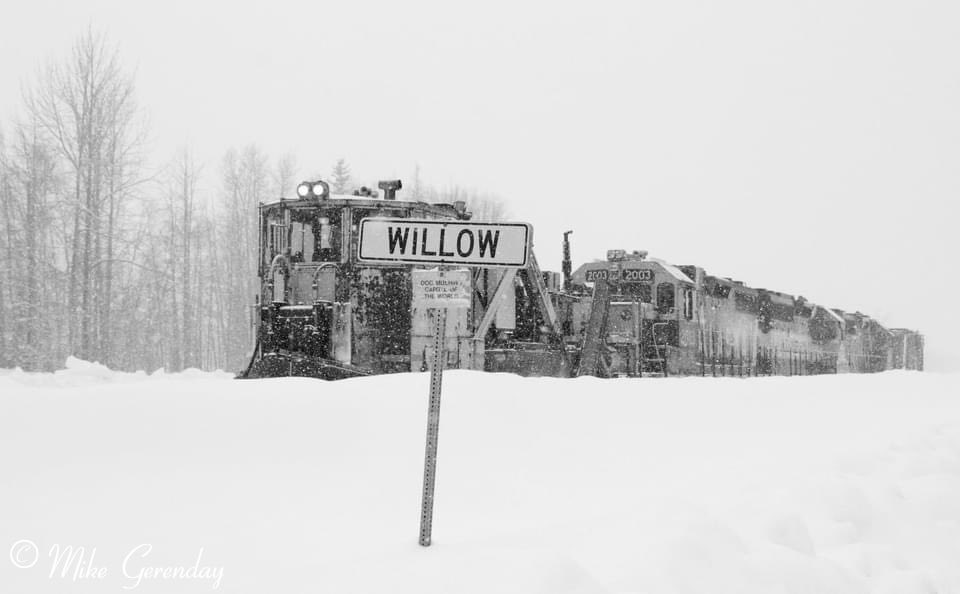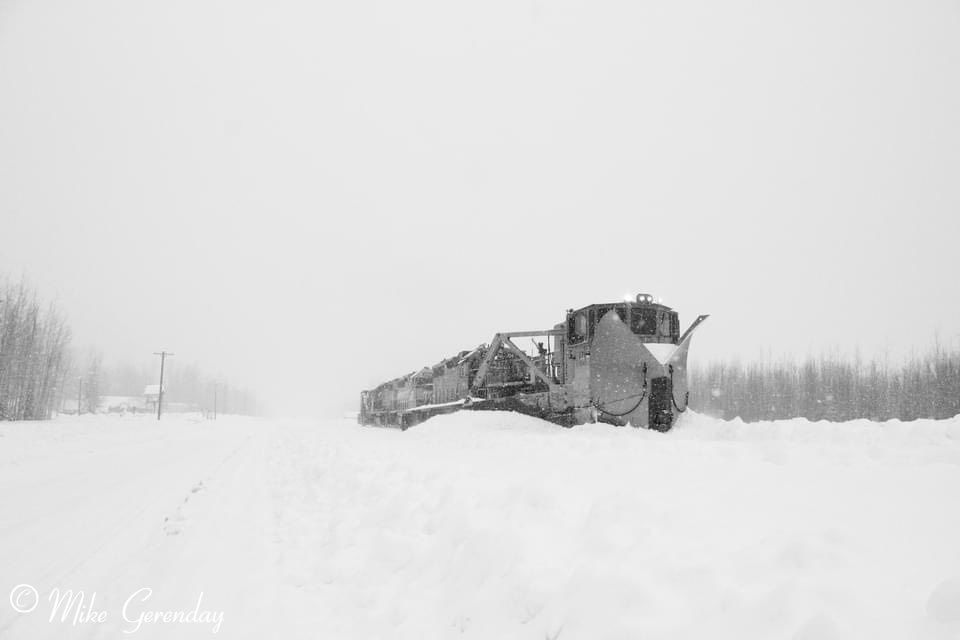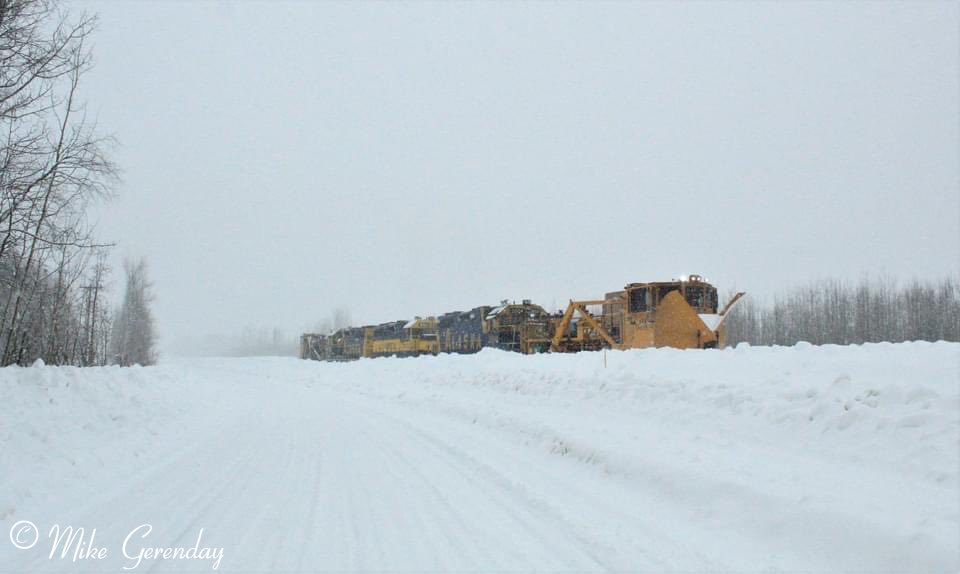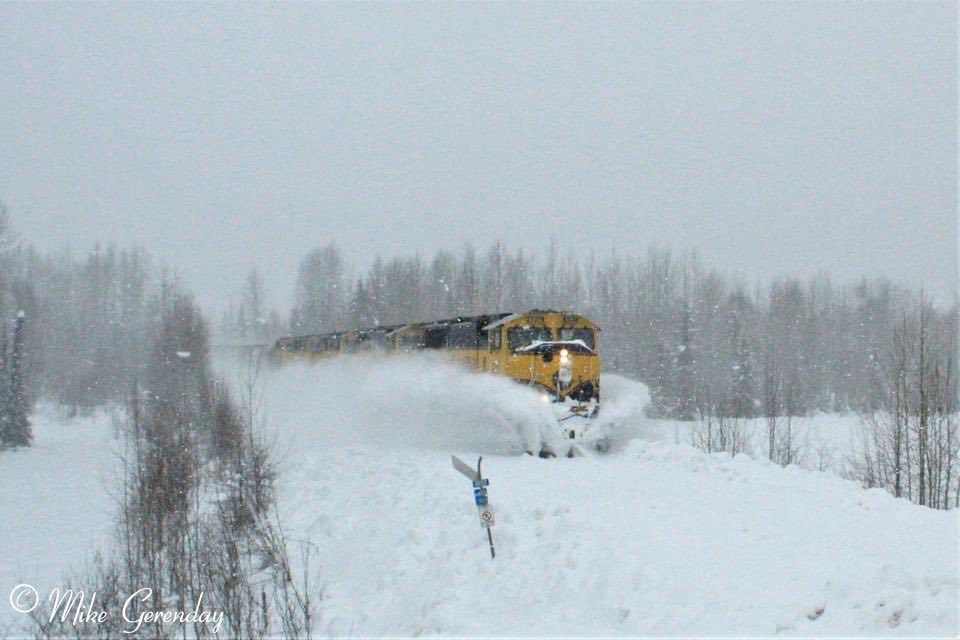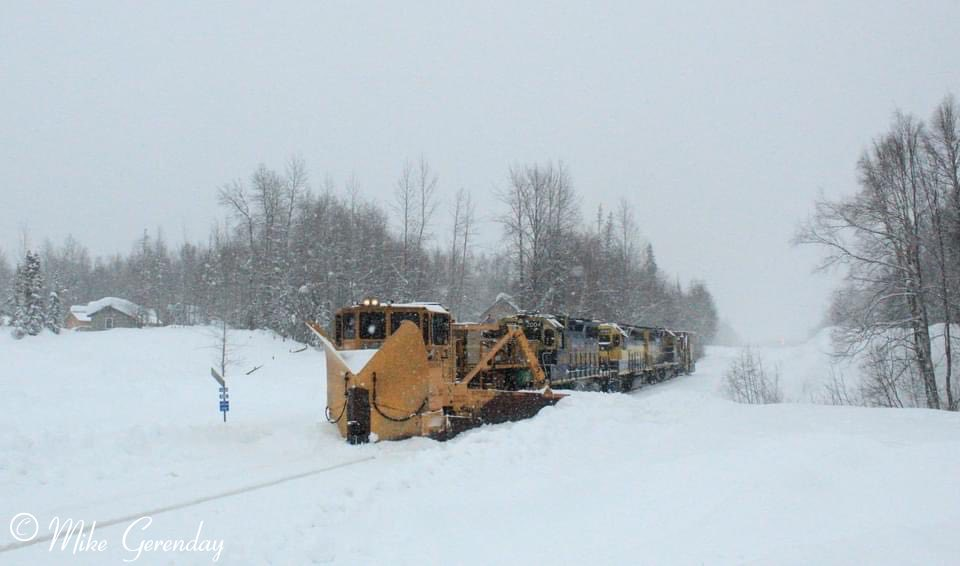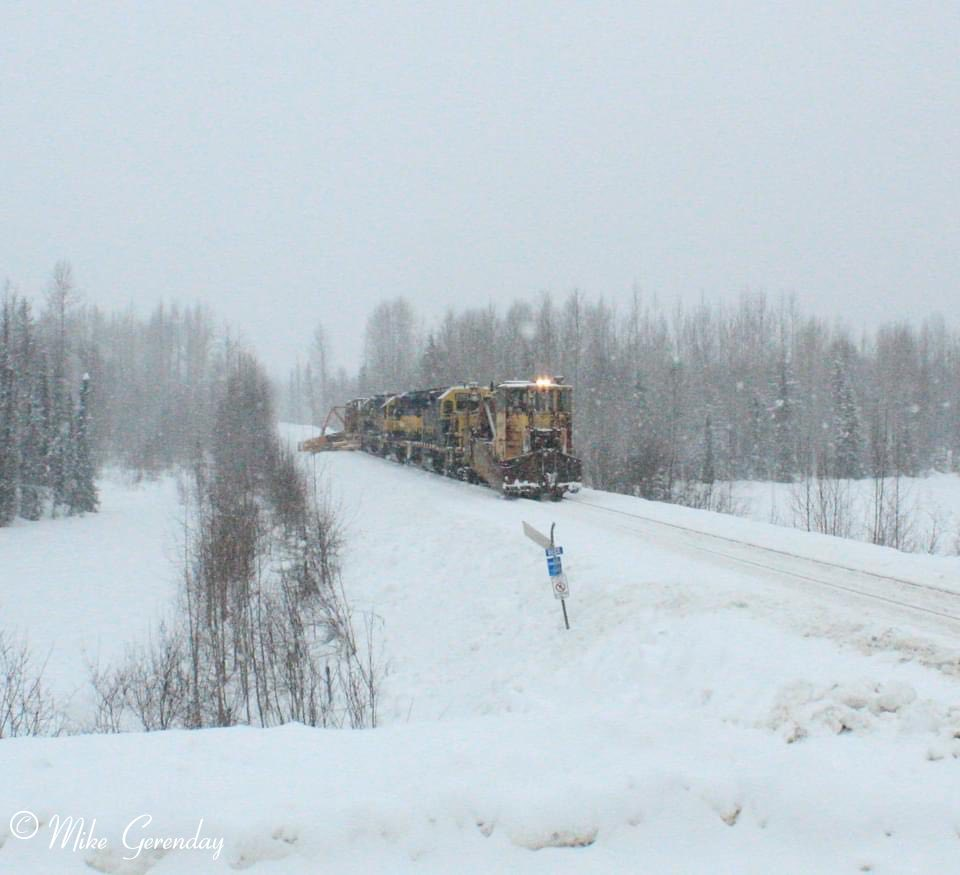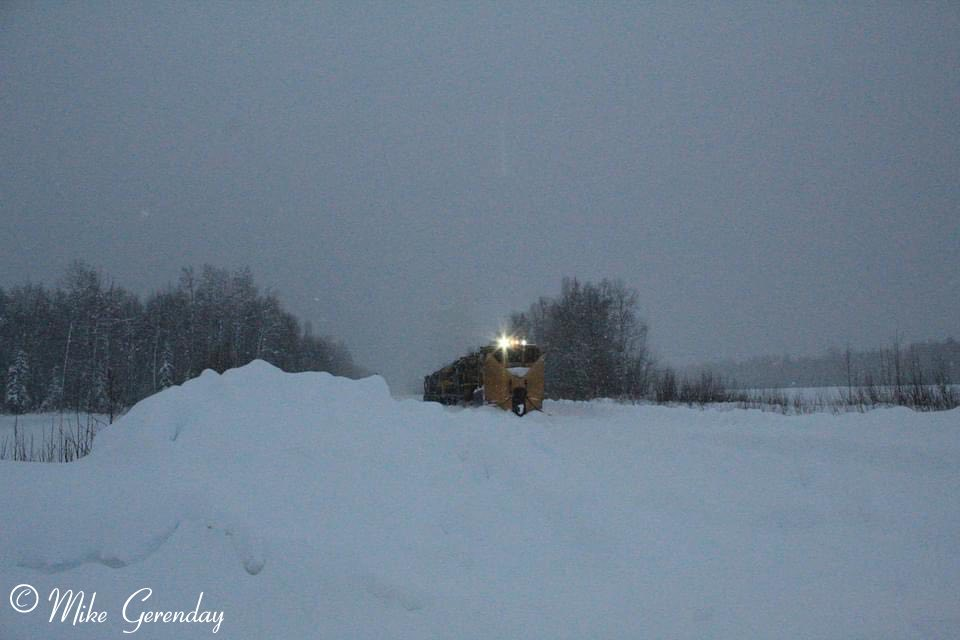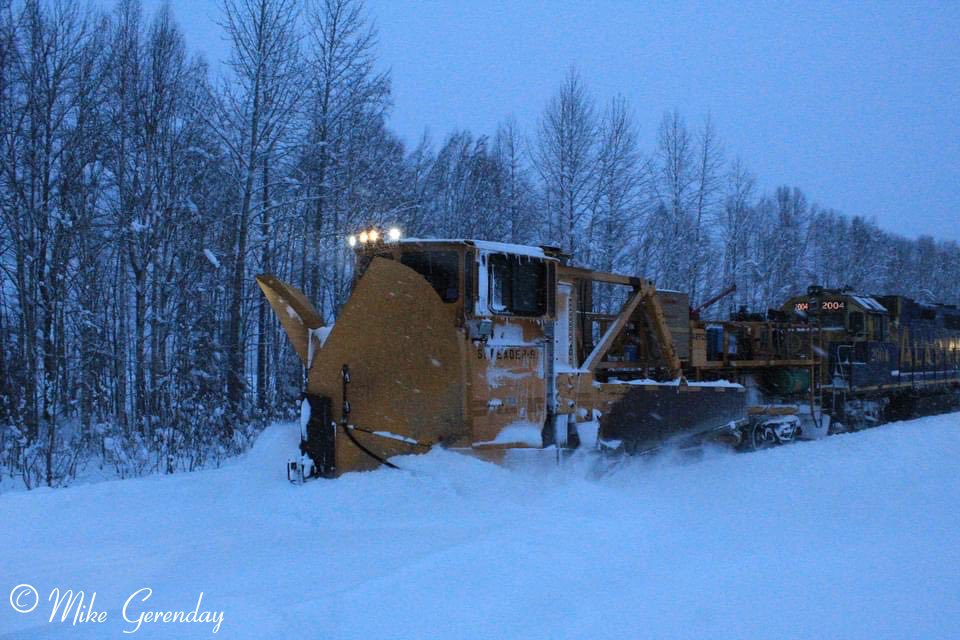This year the snow depths in Alaska have been deeper than some years and is on track to be a memorable one. With the week prior to this day, over five feet of snow fell within five days, so when on the morning of Presidents Day 2022 when I first looked out my bedroom window and saw through the dark blue of the low light, the sight of a rather unwelcomed storm had arrived a few short hours before whilst some were still in slumber. I had been up for a short time when I got word of a rare train that has forever eluded the lens of my camera, and that train was Snow Fleet. Over the years photographing and chasing trains I caught many different work trains, freight trains, local trains and passenger trains but not Snow Fleet. I’ve seen Snow Fleet over the years of course, but it has been always either tied down or its returning to Anchorage after a trip. I had never actually seen Snow Fleet plowing snow and working. The Maintenance of Way sections along the railroad have ballast regulators that are used for snow service and some fitted with snow plows or rear mounted snowblowers for between the track in for certain circumstances. With the now deep snow, these ballast regulators can only do so much. When the snow gets too deep snow fleet is called. Usually, the Snow Fleet consists of a Jordon Spreader, two to three GP locomotives with a spreader on the other end, though the job has been accomplished many times with a single spreader. Jordon Spreaders were made by the O. F. Jordon Company of Chicago IL and are used in both ballast and snow service. With a large plow on the front with wings that push snow away from the track the early models were pneumatically operated, but now modern spreaders are now operated by hydraulics powered by a large generator and are moved by locomotives. The spreaders have wings that move in and out to spread the snow away from the track, and a large plow on the front can be raised or lowered so snow can be cleared below the top of the rail. The operators adjust the wings and plow according to angled signs called flanger boards, these are placed one hundred feet from switches, crossings, or anything that is in between the rails. The ARR has three spreaders, Spreaders 7, 8, and 9, with 9 being built in 2000 and the others built in the 1970s. Spreaders 7 and 9 have large front plows for snow service while Spreader 8 is a summer style spreader with a low front plow. On this day the consist was Spreader 9 on the facing point, 2003, 3002, 2004, and Spreader 8. 2003, and 2004 are both EMD GP-38-2 locomotives and 3002 is a GP40-2 locomotive. Snow Fleet was switching in Pittman just north of Wasilla and would head north. By the time I left home there was already a few inches on the ground, and the roads were terrible but it’s part of life here. When I got to Pittman, Snow Fleet was about done and would soon be heading north. The three locomotives were dressed in both Bold Alaska and the modern-day scheme, once more common to see in the early 2000s the Bold Alaska scheme is slowly disappearing, like the black and gold scheme. I had a couple of fast errands to run so I decided to take of them and wait for the train at a new location. It turns out a new crew was brought to Wasilla and another locomotive was needed for the trip through the heavy snow regions up north. I parked my car and stood near the crossing of Cheri Lake Road a few miles north of Pittman. Soon the headlights of Jordon Spreader 9 came around the curve and shown though the snowfall. The consist looked like how it used to be in the early 2000s, if only a black and gold unit was in the mix… Once it passed by, I started on the rest of my trip towards home, they weren’t working but would by the time they reached Houston a few miles from Cheri Lake. I decided I would catch them in Willow instead of Mike Ardaw or White’s Crossings. After spending some time getting some landscape photos and checking mail I drove to the tracks and lo and behold, there was Snow Fleet getting close to the road crossing. Willow Station Road crosses and follows the track for a distance providing good views of a train. Snow Fleet plowed to the north switch of the now stubbed Willow Siding and back in to clear the siding. At one time Willow was a busy stop and was a gateway to the gold mines of Willow Mining District and Hatcher Pass. The siding was rather long and crossed Willow Station Road and was cut back to a stub track in 2014. Willow had a wye as well that was heavily used by MOW until the switches were pulled in 2013. An old speeder/supply shed stands near the main line with couple of containers nearby are the only buildings left of Willow Section. The section house was torn down many years ago. Snow Fleet backed into Willow Siding for the first time and the conductor whom I knew yelled to me that they had some more work to do before they had to clear for a last southbound freight. I took plenty of photos and video of them clearing the siding and main and then positioned myself on a very high snowbank next to the crossing on Willow Fishhook Road so I could catch the freight and Snow Fleet. A young moose decided to walk the line from the switch to the crossing, he had plenty of time to move out of the way before any train could cause him harm. A few minutes went by and soon the southbound freight with five locomotives pulling a long train of mostly empties rolled on by in a wave of blowing snow, the lead locomotive reminded me of a battleship in rough seas as the plow cut through the wet snow. It wasn’t long before Snow Fleet came out on the main and continued north. By now it was snowing very hard and it seemed like a few inches fell in the over two hours I was there, and the roads were getting worse. I drove home and later on went to a lonely crossing near Montana, I knew they hadn’t passed yet so I waited. I knew they were going to be traveling slow and probably had to plow Kashwitna Siding on the way. After a while the headlights of the spreader pierced through the thick veil of falling snow. Soon they passed by, slowing down enough to bring in the wings and raise the plow for the crossing. From there I started towards Talkeetna where the day would end. I stood on a tall snow pile and waited for them to pass me, my biggest mistake is when they passed though Montana, I should have waited up the road to get a good head on shot of them plowing and really kicking the snow up, but instead I was at the crossing and missed my golden chance for an amazing shot, my only regret of that day. It was a feeble attempt to capture an image I knew I missed out on, but I tried anyway. By now it was getting dark, the blue hour as one could say and lighting gets difficult especially when it’s snowing, if you don’t check and compensate for the ever-changing lighting, the results are less than inspiring. With what seemed to take almost an hour, the headlights came into view and Snow Fleet passed by, the photos I took felt feeble attempt to capture what I missed at Montana. From there I went into downtown Talkeetna and grabbed a few more images, but by now there was a good foot of snow on the ground and I wasn’t interested in adjusting my camera more. Snow Fleet was in Talkeetna Siding and the crew was tying down the train for the night. The next day they kept on heading north to where even deeper snow lay. With the day over, I drove home with the satisfaction that now I can say I have finally witnessed Snow Fleet in action, during a hard falling snow with good lighting conditions. I’m glad the day worked out the way it did, because the next day there was well over twenty-eight inches of snow that fell in less than twenty-four hours with an average of two inches accumulation per hour. Page created 3/17/22 and last updated 3/17/22 |

